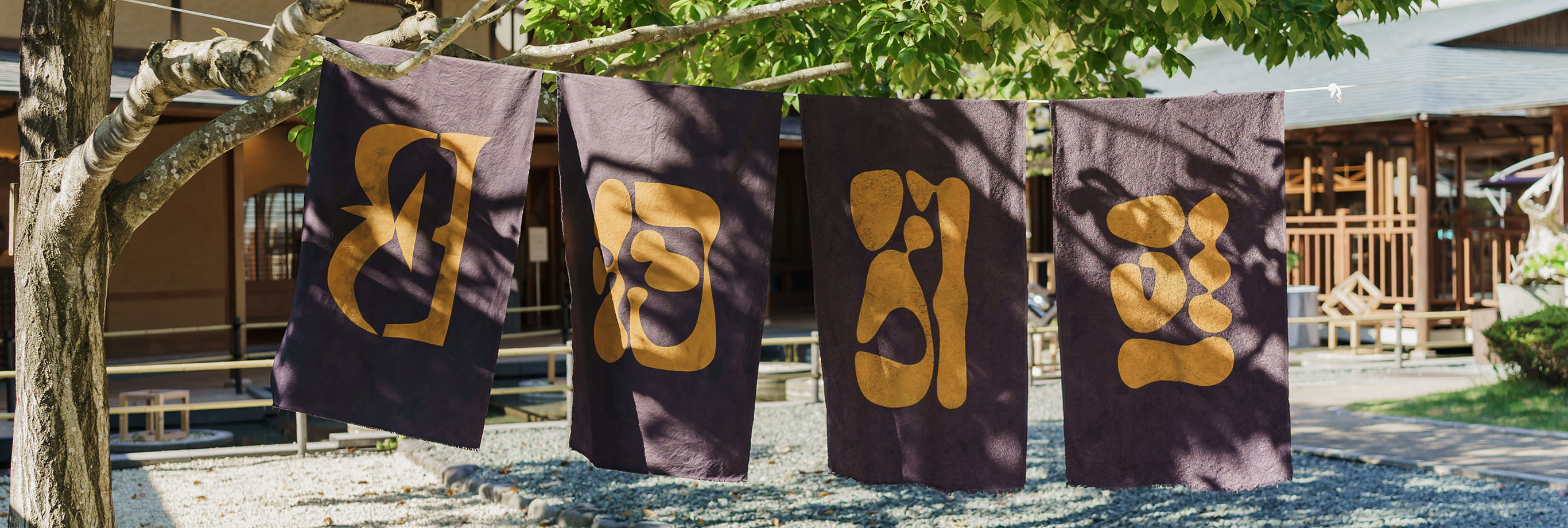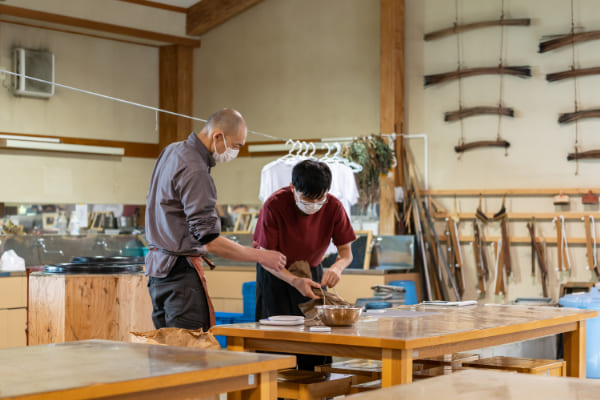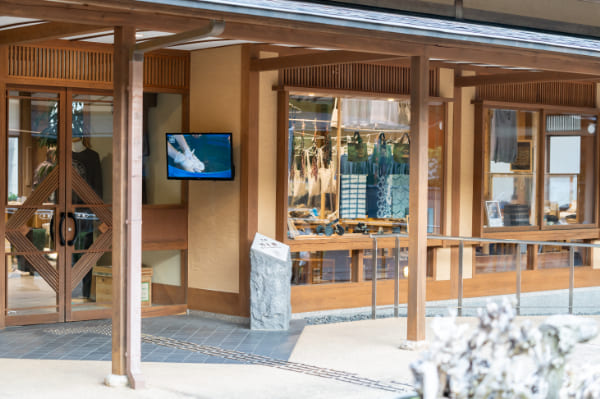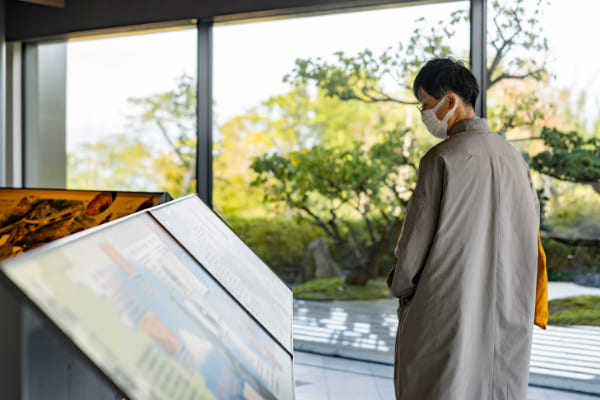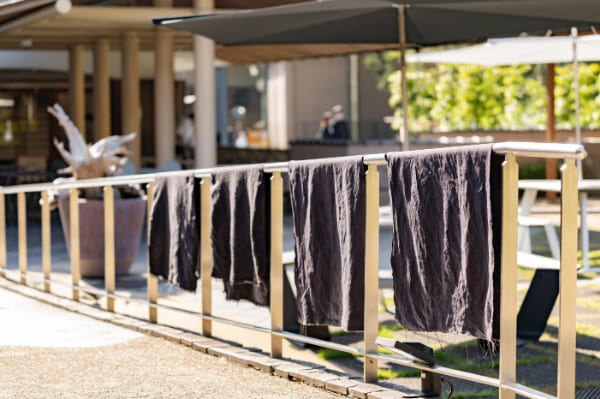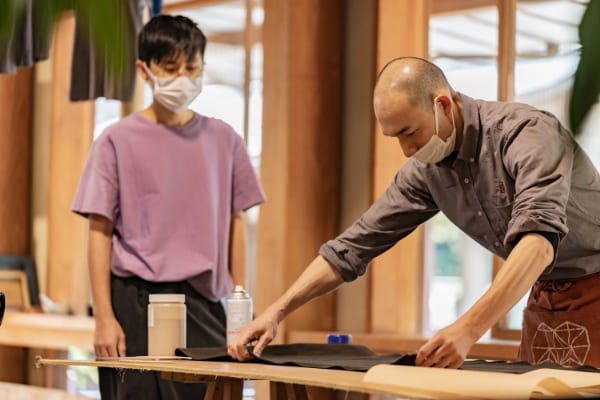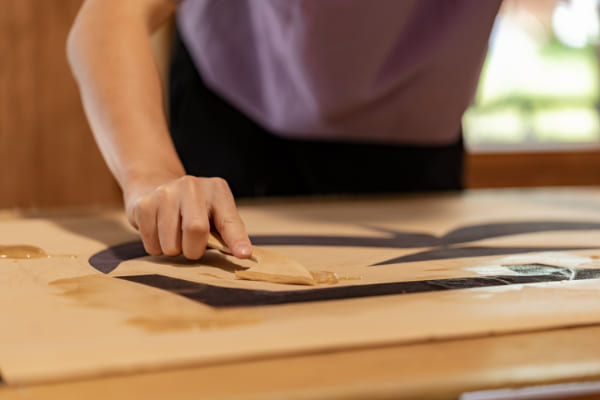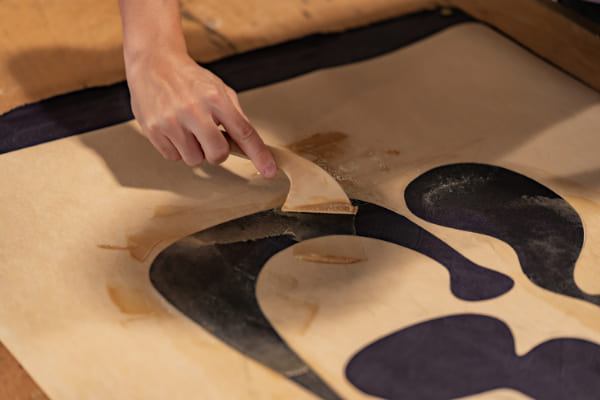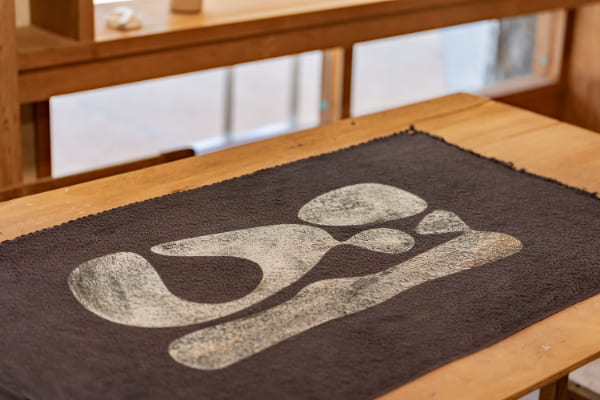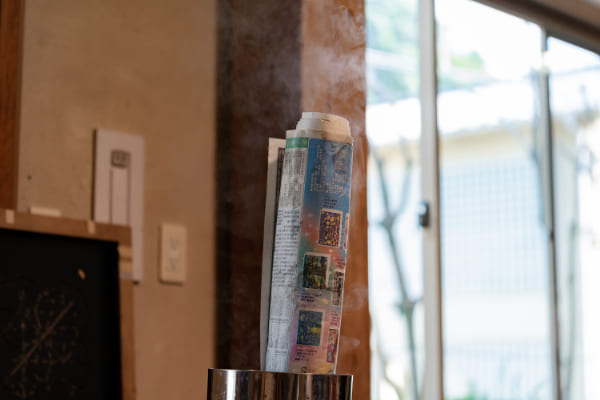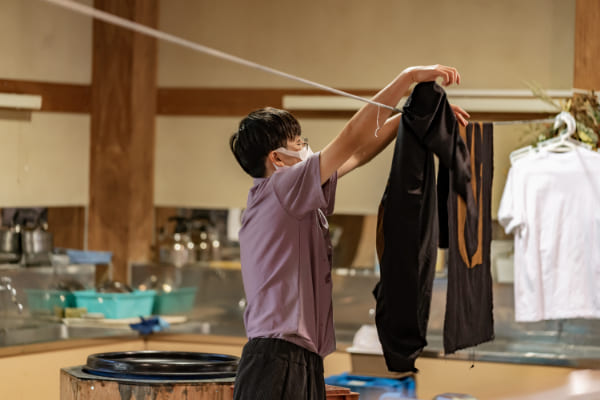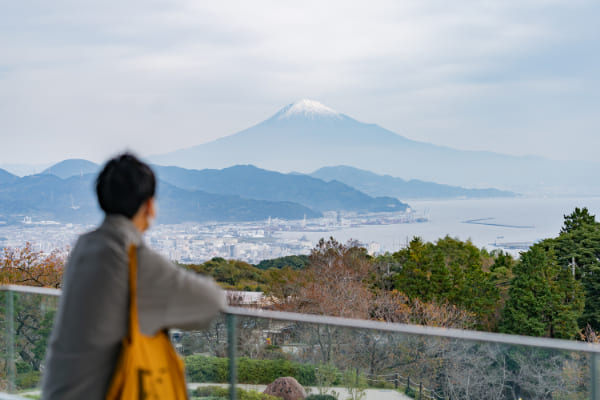About Washizu. Tea Dyeing Studio
Kyoichiro Washizu, the fifth in a line of traditional Suruga wazome dyers in Shizuoka, created
ochazome (“tea dyeing”) out of his desire to produce dyed works distinctive to Shizuoka. For the
dyeing material, he uses parts of tea plants that are derived in the production process for
green tea, a Shizuoka specialty, and are not turned into products. He dyes fabric by combining
this dye with stencil dyeing technology.
Washizu also constructed a cyclic scheme whereby the tea dregs left after decoction to obtain
the dye are processed for use as fertilizer. He is striving for the spread of this dyeing
technology and of cyclic manufacturing that can be achieved on the local level.
The process of tea dyeing
-

01.Dyeing fabric
Washizu uses plenty of tea leaves that are derived in the process for manufacturing green tea or that were not used for this purpose for various reasons, and takes his time decocting them. During the decoction, he filters out the tea leaves with cotton cloth in order to remove excess dregs that could cause uneven dyeing.
-
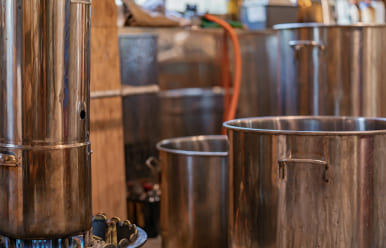
02.Simmer dyeing to heighten fastness
To obtain a fully sufficient degree of fastness, Washizu carefully dyes the fabric by simmering it in water with exacting control of the temperature. After filtering out the decocted leaves and adding iron, he puts the fabric into the water and continues to simmer it while raising the temperature a little at a time. Requiring a considerable expenditure of time and trouble, this process is repeated until the right coloring is obtained.
-
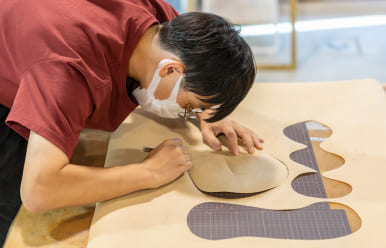
03.Making the stencil
The artisan devises draft patterns and designs called shitazu. More specifically, shitazu are drawings of running pattern designs and motifs for the target articles and desired images. The artisan then traces these designs and motifs on the stencil paper and cuts them out. This work requires very strong powers of concentration, as it has a particularly direct bearing on the quality of the finished product.
-
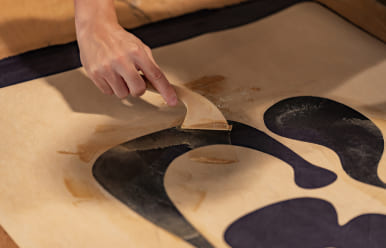
04.Glue blocking
The artisan lays the stencil on the tea-dyed fabric, and then applies titanium glue on top of the stencil, both evenly and with a proper thickness. Once this is done, the stencil is slowly lifted off the fabric.
-
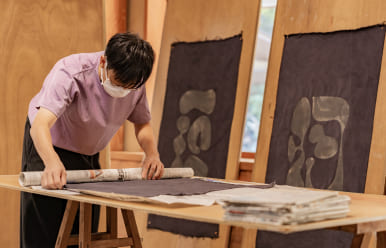
05.Steaming
To have the glue applied to the fabric fully develop the coloring, it is exposed to hot steam for about 20 minutes.
-
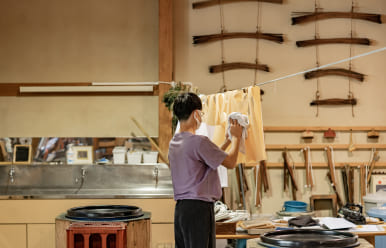
06.Rinsing
Lastly, the fabric is put into water and rinsed to remove the glue.
Towards a sustainable society using green tea, a Shizuoka speciality
As might be gathered from the many place-names related to fabric, Shizuoka has been a center of
weaving and dyeing since the days of the 16th century warlord Imagawa Yoshimoto. The start of
the Meiji era in the middle of the 19th century saw the mechanization of weaving and decrease in
dyeing work. However, with the rise of the folk crafts movement in the Taisho era (1912-1926),
Keisuke Serizawa, a dyer who was designated a living national treasure, led activities that
refined techniques and designs, and gave birth to the features of Suruga wazome dyeing.
With this background, Washizu has breathed new life into tea, which is loved around the world in
the form of a beverage, as a natural dye with a unique texture. Articles dyed with tea as a
natural dye are produced by a sequence of process steps, each entailing meticulous work. Washizu
prepared a process which pursues a finished dye that is fast and produces excellent coloring. In
addition, he uses stencil dyeing to create all sorts of patterns and designs.
Deshitabi Schedule
The program schedule is subject to change without notice.
DAY 1Apprentice training in tea dyeing and production of works
| 09:00 - 12:00 | Examination of ideas for stencils (draft designs) |
|---|---|
| 12:00 - 13:00 | Lunch with other artisans (prepared by each participant) |
| 13:00 - 15:00 | Preparation of stencils |
| 15:00 | Break (with green tea and sweets) |
DAY 2Experience Shizuoka’s history and culture
| 09:00 - 12:00 |
In Sunpu Castle Park’s Tatsumi Turret / tour focused on the history behind the birth
of traditional industry in Shizuoka In Sunpu Castle Park’s Momijiyama Garden / experience of Shizuoka green tea and its culture |
|---|---|
| 12:00 | Lunch and visit to Takumishuku, Traditional Hand Craft Arts Center |
DAY 3Apprentice training in tea dyeing and production of works (continued from Day 2)
| 09:00 - 12:00 | Glue blocking |
|---|---|
| 12:00 - 13:00 | Lunch with other artisans (to be prepared individually) |
| 13:00 - 15:00 | Steaming and rinsing |
| 15:00 - 15:15 | Break |
| 15:15 - 16:30 | Rinsing and finishing |
| 16:30 | Clean-up and final gathering |
Washizu. Tea Dyeing Studio
Washizu. uses tea leaves that are left over from the tea-making manufacturing process as a dye,
and creates hand-dyed crafts using the traditional Shizuoka technique of "Suruga wazome". Their
products range from everyday items such as hand towels and T-shirts to clutch bags made from
Enshu-sashiko fabric.
www.ochazome-shizuoka-japan.com

